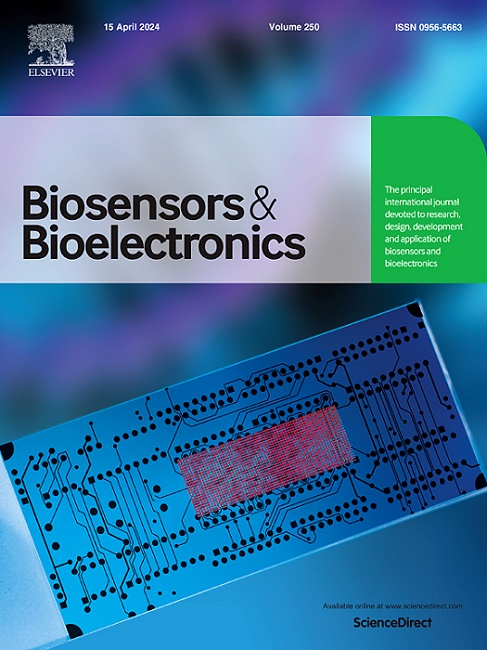Boosting ultrasensitive electroanalytical detection of antibiotics at triphasic interface enzymatic biosensor
IF 10.7
1区 生物学
Q1 BIOPHYSICS
引用次数: 0
Abstract
Electroanalytical procedures are often closely bound up the gas molecules. However, the detection limitation of some electroanalytical procedures was largely limited by the lower solubility of gas molecules in liquid. To address this problem, a photoelectrochemical enzymatic biosensor with triphasic interface was designed for antibiotics detection. The hydrophobic porous carbon paper (CP) with atomic layer deposition (ALD) Zinc oxide (ZnO) film and Tungsten disulfide (WS2) sheets were used for fixing laccase (Lac) to form Lac/WS2/ZnO/CP, which contacted with analyst solution on one side and exposed to the gas phase directly on the other. Impressively, the catalytic activity of Lac on WS2/ZnO/CP was promoted by adjusting the oxygen concentration from the gas phase and generated significant electrochemical response for sensitively detecting tetracycline (TC), resulting in minimum detection limit of 1.81 fM in the range of 10–200 μM. Additionally, the recovery rate of environmental samples remained at 96.07 %–104.48 %, confirming the reliability and practicality of the prepared biosensors. This strategy provided a potential method to upgrade the optical properties and enzyme activities of biosensor with eventual applications in bioanalysis.

求助全文
约1分钟内获得全文
求助全文
来源期刊

Biosensors and Bioelectronics
工程技术-电化学
CiteScore
20.80
自引率
7.10%
发文量
1006
审稿时长
29 days
期刊介绍:
Biosensors & Bioelectronics, along with its open access companion journal Biosensors & Bioelectronics: X, is the leading international publication in the field of biosensors and bioelectronics. It covers research, design, development, and application of biosensors, which are analytical devices incorporating biological materials with physicochemical transducers. These devices, including sensors, DNA chips, electronic noses, and lab-on-a-chip, produce digital signals proportional to specific analytes. Examples include immunosensors and enzyme-based biosensors, applied in various fields such as medicine, environmental monitoring, and food industry. The journal also focuses on molecular and supramolecular structures for enhancing device performance.
 求助内容:
求助内容: 应助结果提醒方式:
应助结果提醒方式:


